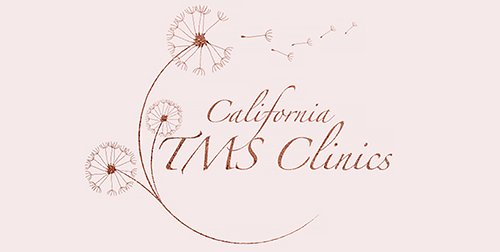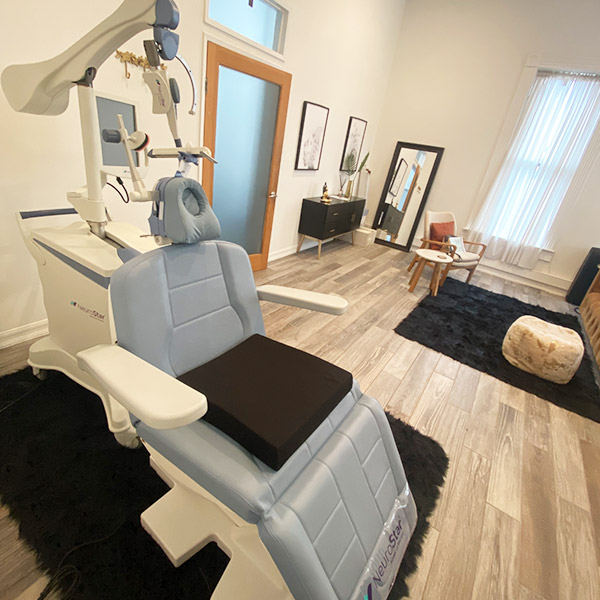Is Transcranial Magnetic Stimulation Harmful?
Transcranial magnetic stimulation (TMS), a kind of brain stimulation therapy, may improve mental health disorders such as depression. It's a non-invasive depression treatment utilizing short pulses of magnetic fields to excite nerve cells in the brain.
This article aims to explain what transcranial magnetic stimulation is and how it works. An additional purpose is to discuss TMS risks and TMS side effects.
What's Transcranial Magnetic Stimulation
Depression is a chronic medical condition wherein a person feels very anxious/sad and often has physical symptoms such as not sleeping. Psychotherapy and antidepressant medications are first-line treatments for major depression.
TMS has recently experienced increased interest in treating major depressive disorder (MDD) and treatment-resistant depression (TRD). MDD is a highly prevalent psychiatric disorder that severely impairs functioning and diminishes the quality of life.
TMS is almost exclusively used to treat what’s known as treatment-resistant depression. In other words, TMS is reserved for those instances when other treatments have failed. TRD is defined as the absence of a clinical response despite at least two consecutive antidepressant trials of adequate doses and duration.
TMS therapy uses pulsed magnetic fields to activate the part of the brain responsible for mood regulation. This method of depression treatment involves delivering repetitive magnetic pulses (repetitive TMS or rTMS).
TMS is a non-systemic therapy. It's not taken orally and doesn't circulate in the bloodstream (or throughout the body). There is no need for taking pills, injections; magnetic fields simply pass through brain tissue without causing damage.
How Transcranial Magnetic Stimulation Works
An electromagnetic coil is placed on the patient's scalp (near the forehead). This coil emits a small magnetic pulse to a specific area of the brain that controls mood (left prefrontal cortex) setting off changes in neuron activity. In other words, TMS activates areas of the brain underactive in individuals with depression.
TMS vs. Electroconvulsive Therapy (ECT)
TMS isn't shock therapy, and these two therapies are significantly different. Both ECT and TMS utilize electric stimulation to control the brain's neural activity; they have different therapeutic benefits and aren't the same under any definition.
TMS treatment utilizes magnetic pulses to excite the brain in a non-invasive manner. In contrast, ECT uses electric currents to induce a seizure. TMS is an outpatient procedure, while ECT is administered in a hospital with the patient sedated under anesthesia.
Additionally, the TMS procedure has fewer side effects than the ECT. As a consequence of the stigma as well as the relatively high undesirable side effects associated with ECT, many folks prefer TMS.
Long-term Effects of Transcranial Magnetic Stimulation
There's no definitive answer to how long the TMS’s impact will last due to various factors influencing each person's depression. A study conducted in 2013 to examine 12-month outcomes for patients who completed TMS depression treatment found that 68% had improved symptoms after a year, and 45% were in complete remission. The efficacy of TMS may increase as researchers learn more about the best portions of the brain to stimulate, the number of stimulations required, and the techniques.
Can TMS Help with Other Conditions
In the United States, TMS therapy is accepted as a treatment for major depression. The use of single-pulse TMS to treat migraines was approved by the Food and Drug Administration (FDA) in December 2013. The FDA also approved the use of deep transcranial magnetic stimulation to side-effect-free obsessive-compulsive disorder (OCD) in 2018.
Chronic pain, Schizophrenia, anxiety disorders, Parkinson's disease, stroke rehabilitation, and post-traumatic stress disorder (PTSD) are other conditions that may at times be treated with TMS (although they aren't FDA approved). While some promising research points to potential benefits for treating these conditions, further clinical research is required to better evaluate how TMS can be utilized for such purposes.
What Patients Can Expect During a TMS Session
A TMS technician and a TMS physician perform the TMS therapy. TMS utilizes magnetic pulses; therefore, patients are requested to take off any magnetic-sensitive objects such as credit cards, jewelry, etc., before beginning treatment. The technician will have the patient wear earplugs to minimize the clicking sound of magnetic impulses.
If it's the patient's first session, the technician/physician determines the best location to place the magnets (on the patient's brain) and adjust the best dose of magnetic energy for the patient. Next, the technician will place an electromagnetic coil against the patient's head. This coil will be turned off/on repeatedly to produce stimulating pulses.
While treatment is administered, patients remain awake while sitting in a comfortable chair. They may hear a clicking sound because the magnetic impulses are being released. They may feel a knocking or tapping sensation under the magnetic coil. Patients may also experience some scalp discomfort while receiving the treatment (and for a short time after that). They can drive themselves home after the treatment and resume their normal activities.
TMS Treatment Duration
TMS therapy can take a few weeks to a few months, depending on the patient’s condition. Each patient starts to feel better at different times. Treatment sessions typically last around 30-40 minutes. How long each session lasts is based on the number of pulses delivered and the TMS coil used.
A typical TMS therapy course consists of five treatments/week. It usually lasts about four-six weeks (20-30 total treatments). It's believed that TMS maintenance sessions prevent the relapse of depressive symptoms, thereby maintaining the patient’s wellness.
Those Who Shouldn't Have TMS
TMS uses magnetic fields; therefore, patients with any ferromagnetic or magnetic sensitive metal objects such as metal plates, clips, deep brain stimulators, etc., implanted in their head or neck (not including braces or dental fillings) shouldn't use it. The magnetic fields in TMS can cause these implants to move or heat up, leading to serious injuries.
Additionally, there have been a few documented cases of seizures during TMS treatment. If patients have a medical condition that increases the risk of seizure or have a history of epilepsy, TMS therapy should be avoided. Moreover, pregnant women and those attempting to get pregnant should also stay clear of TMS.
Pros & Cons of Transcranial Magnetic Stimulation
Like any medical procedure, transcranial magnetic stimulation has its specific risks/benefits. Patients should take them into account when deciding on a TMS therapy treatment plan for depression. The pros tend to outweigh the cons, but nevertheless, patients should familiarize themselves with the common benefits and side effects toward maximizing the chances of making an informed decision.
Benefits of TMS
Here are some of the pros of transcranial magnetic stimulation therapy:
- TMS therapy is a well-tolerated procedure with minimal to zero side effects
- Unlike most treatment options for depression, TMS is the least invasive treatment method for depression
- It's an outpatient treatment and doesn't require sedation or anesthesia
- While some depression medications could lead to dependency, TMS has no addictive properties of any type
- Unlike ECT/shock therapy, associated with memory loss, TMS therapy doesn't impact memory/cognition
- TMS therapy has no systemic side effects associated with classical antidepressants such as weight gains, dry mouth, sexual side effects, stomach issues, etc
- TMS is an excellent option for the treatment of medication-resistant depression
- While the criteria for insurance coverage may be strict depending on the insurer, nowadays, almost all insurance companies recognize TMS therapy as a medical necessity for depression treatment.
Drawbacks of TMS
Here are some of the cons of transcranial magnetic stimulation therapy:
- Although TMS sessions are short, patients need to attend five sessions a week for four to six weeks to access the full benefits of TMS treatment.
- Although most insurance companies cover the cost of TMS therapy, it can be quite costly for those without extended coverage.
TMS Side Effects & Risks
Generally, TMS is considered safe and well-tolerated. However, it's not to say it’s entirely side-effect-free. The good news is patients often experience these side effects only during the first few treatment sessions. They rarely experience anything acute enough to deter them from continuing treatment. TMS side effects can be classified into common and uncommon.
Common TMS Side Effects
The side effects associated with TMS aren't severe in most cases. They may include:
Headache: Headache is the most common side-effect of TMS therapy. It’s reported in about half of patients. TMS headaches typically diminish due to the direct local analgesic effect of TMS or habituation. Patients can use over-the-counter pain medication to treat these headaches.
Scalp Discomfort: About one-third of participants may experience scalp pain/discomfort around where TMS pulses are applied. These unpleasant sensations tend to decrease throughout treatment. However, adjustments can be made promptly in stimulation settings and coil positioning to reduce discomfort as required.
Facial Twitching: Some patients complain about facial tingling/twitching. They may experience twitching or movement of the jaw or eyelid during stimulation. The reason may be the stimulation of superficial nerve branches or the contraction of superficial muscle groups.
Uncommon TMS Risks
TMS risks may include:
Seizure Seizure is one of the most serious TMS risks. However, the overall risk of a seizure is exceedingly low. Most TMS-induced seizures are relatively brief and have no long-term medical complications. Most TMS-related seizure events occur in patients with a preexisting risk for seizure.
Mania If patients have a diagnosis of Bipolar Disorder, a manic episode can be triggered from treatment, although this is very unlikely/uncommon.
Hearing Loss Exposure to loud noise could result in decreased auditory acuity. Since the machine producing the stimulation treatment can be loud, earplugs or other adequate hearing protection are provided to the patient during the treatment. However, some patients may still complain about hearing problems immediately after the treatment. There’s zero evidence these effects are permanent if patients put on earplugs during the treatment.
While TMS is a safe procedure, it’s essential to point out that unforeseeable TMS risks aren’t currently recognized because it’s a new treatment. Additionally, more study is needed to determine whether TMS may have any long-term side effects.
Bottom Line
Nearly all forms of depression treatment are associated with side effects. TMS therapy has its unique advantages/disadvantages. TMS often has fewer side effects compared to antidepressants and other brain stimulation therapies.
To learn more about how TMS works and our treatments, please contact our Los Angeles Therapy institute experts today! We're eager to help you assess whether or not TMS is the right option for you!


